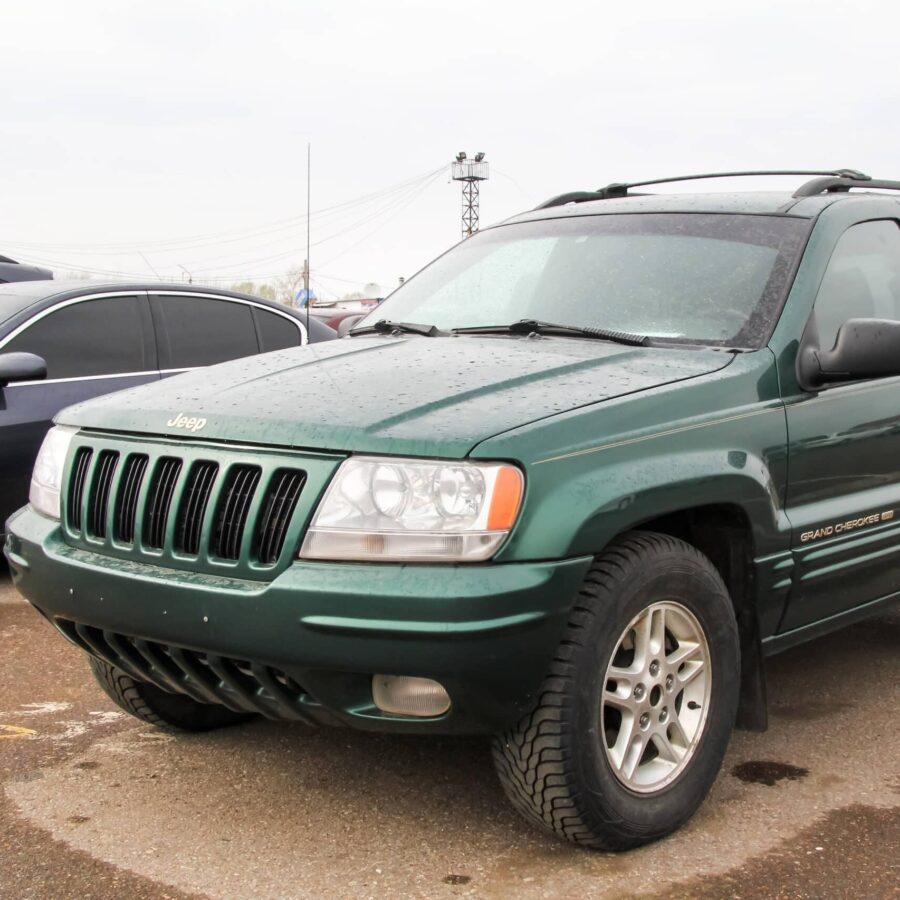Last week the Center for Auto Safety sent a letter to Chrysler requesting them to recall 2.2 million Grand Jeep Cherokees due to the number of vehicle fire deaths that have occurred. These models, which include all those manufactured from 1993 to 2004, have exposed fuel tanks mounted behind the rear axle.
The Center for Auto Safety (CAS) is a consumer safety organization founded by the nonprofit Consumers Union and activist Ralph Nader. CAS sent this latest letter to Chrysler after two previous attempts to persuade the automaker failed. The CAS communication cites the National Highway Traffic Safety Administration’s (NHTSA) FARS 2010 report which showed the total Jeep Grand Cherokee fire death toll sitting at 284.
The letter goes on to explain that at the time of its recall, the NHTSA attributed only 28 fire deaths to the Ford Pinto, which is less than one tenth of the deaths seen with the Grand Cherokee. Last year the Orange County Register reported that consumer safety activist Ralph Nader even called the Jeep a “modern-day Pinto for soccer moms.”
Those are harsh words from Nader, considering the infamous place the Pinto holds in American automotive history. Despite being formally blamed in only a fraction of the number of deaths as the Jeep Grand Cherokee, the Ford Pinto still ranks as one of the most noteworthy safety concerns ever produced by a major auto company.
Critics of the Pinto pointed to a flawed design that allowed rear-end collisions to break off the fuel filler neck and puncture its tank. This resulted in spilled fuel all over the roadway after a crash, putting passengers at risk for being incinerated if a spark then ignited the spilled fuel.
However, it was not only the design defect that solidified this vehicle’s place in automotive infamy, but the way the company was alleged to have handled revelations of its threat to consumers. This was best exemplified by a famous Ford document called the “Pinto Memo” that has been described as a cost-benefit analysis involving vehicle safety.
A 1977 Mother Jones article by Mark Dowie discussed the Pinto Memo at length, and about how production consideration can drive safety decisions. Dowie stated in his article that Ford implemented an accelerated production schedule in order to rush out a model to compete with the VW Beetle. At that time, the Beetle was dominating the American subcompact market. However, Dowie explains that this accelerated schedule meant that tooling went on at the same time as product development, “So when crash tests revealed a serious defect in the gas tank, it was too late. The tooling was well under way.”
Dowie alleged that, “Because assembly-line machinery was already tooled when engineers found this defect, top Ford officials decided to manufacture the car anyway—exploding gas tank and all—even though Ford owned the patent on a much safer gas tank.” When concerns over the exploding vehicles did begin to arise, Dowie wrote that Ford refuted these consumer risk claims, at one point arguing that rear-end collisions are relatively rare, and therefore no vehicle redesign was necessary.
However, a May 1978 Investigation Report from the NHTSA’s Office of Defects Investigation Enforcement called that argument into question. This NHTSA document explained that following Ford’s initial introduction of the Pinto to the market, the automaker continued safety investigations with 55 rear barrier impact tests on both “production vehicles and vehicles with experimental components and/or modified structures.” These Pinto crash tests demonstrated fuel tank puncture, fuel filler neck removal, and damage that could jam “one, or both of the passenger doors closed.”
The NHTSA investigation concluded that “Relevant product liability litigation and previous recall campaigns further establish that fuel leakage is a significant hazard to motor vehicle safety, including such leakage which results from the crashworthiness characteristics of the vehicle.” This led to the 1978 recall of 1,400,000 Pintos and Mercury Bobcats with NHTSA Campaign ID Number 78V143000.
Today’s Chrysler fire issue bears many similarities to what happened in the 1970s with the Pinto. In fact, Consumer Reports did a recent story on the Grand Cherokee fire issue, and quoted a Chrysler company email that bares an eerie resemblance to the same argument Ford used with the Pinto, which stated:
[R]ear impacts resulting in a fire are extremely rare. Rear impacts resulting in a fire occur no more often in 1993 – 2004 Jeep Grand Cherokee vehicles than in peer vehicles, and the 1993 – 2004 Jeep Grand Cherokee vehicles are at no greater risk of exposure to fire in rear-end collisions than peer vehicles. Accordingly, Chrysler Group has concluded that 1993-2004 Jeep Grand Cherokee vehicles are neither defective nor do their fuel systems pose an unreasonable risk to motor vehicle safety in rear impact collisions.
When Ford made a similar argument with the Pinto, NHTSA didn’t buy it and eventually recalled the vehicles anyway. Statistics regarding Grand Cherokee fires seem to suggest that NHTSA should make a similar finding with the Cherokee. Nevertheless, the investigation into the Chrysler SUVs, which began in August 2010, continues to stall and is still unresolved.
Meanwhile, in an attempt to prevent additional deaths, the November letter CAS sent to Chrysler reiterated the “simple and inexpensive” recall remedies proposed by Nader in January of 2011. These remedies included the following installations:
- optional frame rail reinforcement on 1993-1998 Grand Cherokees;
- optional skid plates on all Grand Cherokee models from 1993-2004 that do not have them;
- a check valve system that will shut off the gasoline flow should the filler hose be pulled from the fuel tank or filler neck; and
- extra shielding to protect the fuel tank in the crush zone from impact with sharp objects.
We will continue to watch this issue and hope that the mainstream media picks up on this story. Hopefully, if the public becomes more aware of this issue and pressure grows, there might be corrective action to prevent needless deaths and injuries in the future.


